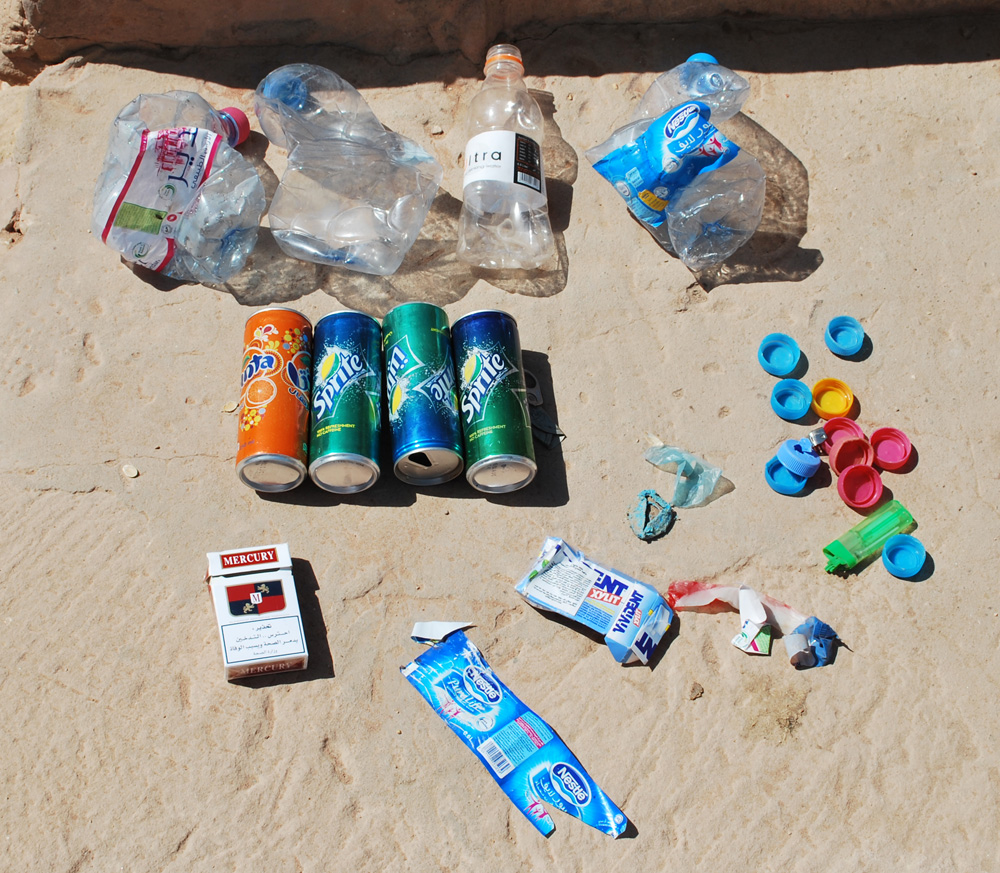The ancient city of Petra is the highlight of any visit to Jordan. The great Nabatean city, with most buildings constructed between the 5th Century BC and 2nd Century AD, is a must-see.
However the problem is the ticket price. A standard day ticket costs JD50 (€49.04, $70.26, £42.94 – exchange rates 30th July 2011), rising to JD55 for 2 days and JD60 for 3. These prices count on you staying at least a night in the area around Petra – if you do not you are supposed to pay JD90 (€88.28, $126.49, £77.30) for a day ticket, although no-one asked us for proof we had stayed in Petra (we had).
These prices are more than double the JD21 for 1 day and JD26 for 2 days quoted in The Rough Guide to Jordan printed in September 2009.
JD50 for a day makes Petra more expensive than any single tourist attraction I have ever been to, and it is exorbitantly higher than anything else in Jordan. The Jerash Roman city is JD15, Wadi Rum JD5 and Kerak, the Madaba mosaic and all the attractions in the Eastern Desert just JD1 each.
So what do you get for your expensively priced ticket?
OK, you get entrance to one of the most remarkable ancient sites anywhere, something you will never forget.
However the tourist experience is far from perfect, and for JD50 it ought to be stunning. It isn’t.
The tiny, temporary ticket office opened 10 minutes late, and the new visitor centre – promised for 2011 – is still a hulk of half finished steel and concrete, to be complete by April 2012 they claim. The promised bus back to Wadi Musa from the basin, audio guides, and hospitality and interpretation – promised for 2010 – have not been put in place, but the ticket price hikes have been.
Visitors get just a ticket for their JD50. No map, no folder of information, no guide, no transport. A basic guided tour is JD20 extra, and horse transport through the steeply inclined Siq is a further JD20. There are also no audio guides (even Kerak has these) and signposts within the site are few and far between.
 The site itself is reasonably well maintained, but cleanliness on the less central routes could be improved (a picture of the rubbish we collected on the way back from The High Place of Sacrifice is shown to the right). There are trinket sellers everywhere, including inside the building of the Urn Tomb, and stalls that no longer are in operation have not been cleared away. Young children pester you for donkey rides or to purchase postcards. In the early morning the valley is filled with the chugging sound of the many generators that power the food stalls and trinket stands; surely solar power would be a far better solution.
The site itself is reasonably well maintained, but cleanliness on the less central routes could be improved (a picture of the rubbish we collected on the way back from The High Place of Sacrifice is shown to the right). There are trinket sellers everywhere, including inside the building of the Urn Tomb, and stalls that no longer are in operation have not been cleared away. Young children pester you for donkey rides or to purchase postcards. In the early morning the valley is filled with the chugging sound of the many generators that power the food stalls and trinket stands; surely solar power would be a far better solution.
It is also rather unclear where tourists are allowed to walk, or not, and in the few places it is obvious – like the amphitheatre – ugly fences block the view. Smaller areas of interest, such as the Unfinished Tomb, are inaccessible and the view obscured by rubble.
The town of Wadi Musa outside the gate to Petra is described by The Rough Guide as a “badly run, seedy little place” and we saw nothing to change that impression. One restaurant owner we asked about the Petra ticket prices was keen to state that the pricing regime was created in order to get people to stay a night in the area and to finance the future development of Petra, the so-called Masterplan. Perhaps a better welcome for tourists and a more pleasant atmosphere in the town would better encourage people to linger, and it is questionable whether such hefty ticket price rises now to finance a strategy for the future is acceptable.
Last but not least, if you do go to Petra, three quick tips. Night visits into the old city are run every Monday, Wednesday and Thursday night, starting at 2030 and costing JD12 per person. The Siq is lined with candles and the calm is eerie and peaceful, and the visit is worthwhile. Second, start your trip into Petra early – at 0600 there are no trinket sellers, no horses or camels, and all the major sites are deserted. The temperature and light are better too. Have a doze later in the day instead. Third, stay at the excellent Ammarin Bedouin Camp just outside Wadi Musa. Best to have a car to get to it, but it is friendly and calm (unlike Wadi Musa).













